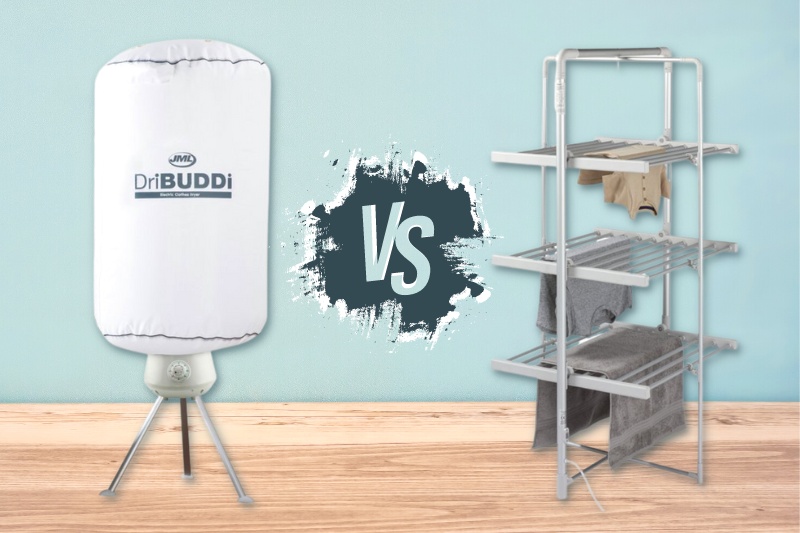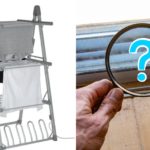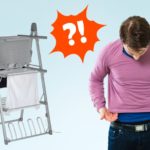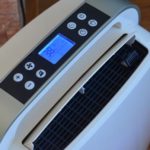One of the most popular options when drying your laundry is to use a heated airer. This is a slightly more advanced version of a clothes horse which can be plugged into the wall so that the bars you hang your clothes from heat up.
While this is a highly effective drying method, various other options are available to you. One of the lesser-known appliances is a drying pod.
These contraptions are fairly new, but the idea is that you can hang your clothes inside a pod and then blow hot air over them using a small fan that is attached to the stand.
Both of these drying options have pros and cons, so we have compiled this comprehensive guide to compare a drying pod vs. heated airer on several factors.
Read on to find our detailed comparison and gain the knowledge you need to decide which drying method is the best fit for you.
1. Drying Capacity
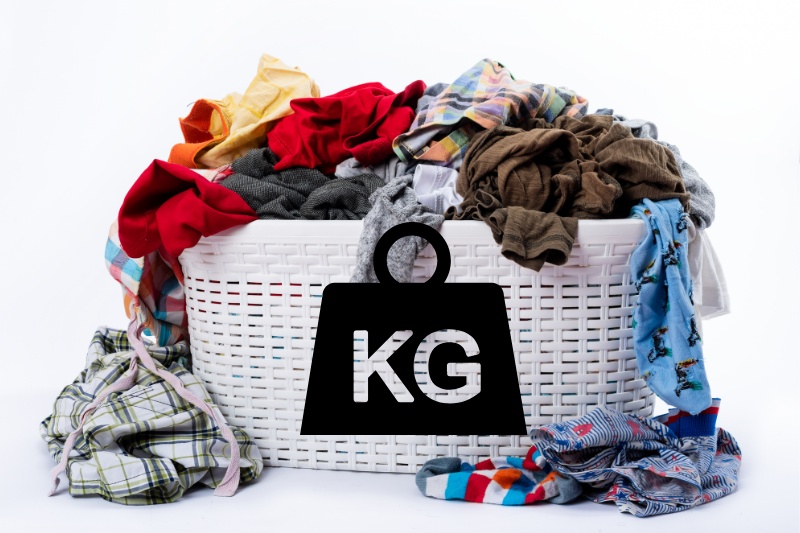
One of the most important factors when choosing a drying method is which one has the largest drying capacity.
This isn’t as important if you’re only washing for yourself, but a small drying capacity can be a big issue if you need to do laundry for a large family.
Fortunately, drying pods and heated airers can hold roughly 10 kg to 15 kg of wet washing at a time. Depending on the amount of laundry you can do at once, this could be enough to allow you to dry two loads simultaneously!
This being said, you have to be careful not to overfill the bars on a heated airer or drying pod, as this will impact how quickly your laundry dries.
For pods especially, this limits the number of large items you can hang to five or six pieces, as they typically don’t have tiers of bars like many heated airers do.
Because the hanging bars in a drying pod are encased, it can also be hard to hang larger items, such as maxi dresses and bedding.
These can easily be laid over the top of a heated airer, so this may be the better choice if you often wash items like this.
2. Drying Speed
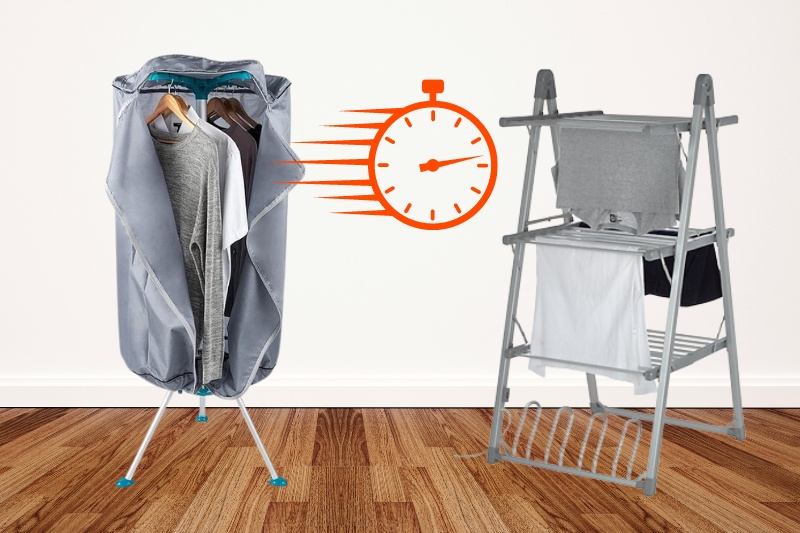
When it comes to drying speed, a drying pod will always be the better choice. The design of a drying pod means that the hot air blowing through your clothing is trapped in an enclosed space.
This greatly increases the temperature inside the pod and means that any load of laundry will be completely dry in as little as two hours.
Although this isn’t anywhere as fast as a tumble dryer, it significantly beats a heated airer, which can take up to 10 hours to dry the same load of washing.
This time scale is based on heavier items, such as jeans and thick jumpers, so cotton shirts will likely be dry in around four hours. However, this is still double the longest time it will take a dryer pod to complete the same task.
Unfortunately, this often means that large households must spread their laundry over multiple days regardless of which drying appliance they choose.
While drying pods are limited in space, heated airers are limited in the speed at which they can dry your washing.
3. Running Costs

There is much variation when it comes to the running costs of a drying pod and heated airer. This is because the costs are impacted by several factors, such as the appliance’s energy usage, how often you use the device, and the amount you currently pay for your electricity.
In general, heated airers are cheaper when comparing hourly costs, as they can be run for less than 10p per hour. For example, a 300-watt heated airer will use 2.4 kWh of energy over 8 hours.
As current UK energy prices are capped at 30p per kWh from the 1st of July 2023, this means it will cost roughly 72p to dry your clothes.
However, you also need to take into account drying speed. Most drying pods cost roughly 35p an hour to run.
Although this will cost much more if you use it for the same time as a heated airer, it works out at 70p if you only run the appliance for 2 hours. As this is typically the longest period you will need a pod to be in use for, you can argue that they are the cheaper alternative.
4. Initial Costs

If you’re looking to buy a heated airer, there are plenty of options to choose from. Basic heaters from as little as £40 can be purchased from various shops and online retailers, with more top-rated models reaching prices of £200.
For those not concerned about having a more modern design, this means that a new airer can easily be picked up for a bargain price!
However, a larger airer with a higher wattage may work out a better investment in the long run because they will be more effective at drying large loads of laundry, therefore reducing your running costs.
Drying pods are much harder to find than heated airers as they are currently a rare drying appliance. That said, they can often be found online for as little as £50, which is only slightly higher than a budget heated airer.
One of the top-rated drying pods (Lakeland’s Dry: Soon Pod) can also be snatched up for under £100 (at the time of writing), greatly beating the price of more high-end heated airers.
5. Practicality
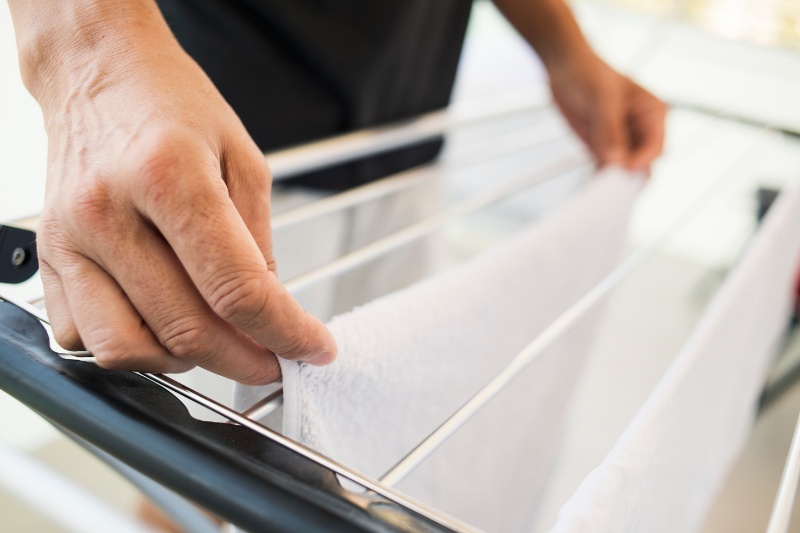
Both drying pods and heated airers have their pros and cons, and so the practicality of these products will vary slightly depending on your own personal wants and needs.
Both appliances are generally simple to use and easy to clean. However, there are also some key differences.
Heated airers are typically more bulky as they often come with wings that fold out and take up a lot of space. This isn’t ideal for smaller households but can be improved by buying a tiered design.
As drying pods are more compact, they are generally the better choice if you’re a bit pushed for space. Fortunately, both appliances can be disassembled or folded up for easy storage.
You must also be wary of where you dry your clothes when using a heated airer. Unless located in a well-ventilated space, they can cause mould growth in your home.
Fortunately, this is not an issue with drying pods, as the pod cover keeps in the damp. This means they can be placed anywhere in your home, regardless of if there are windows and doors that can be opened.
However, the fan used to blow air over your clothes in a drying pod will make a noise when the appliance is in use.
This won’t be as loud as a washing machine or tumble dryer, but it will be noticeable compared to a silent heated airer.
Drying Pod vs. Heated Airer: Our Verdict
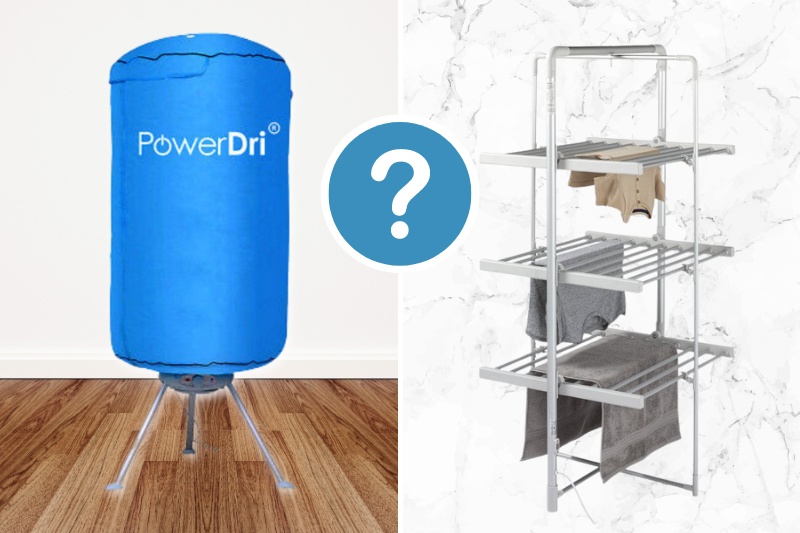
Drying pods and heated airers are both highly effective at drying your clothes. They are easy to use, can be stored when not in use, and can be purchased for as little as £40 to £50, which is great if you’re on a budget! Therefore, your best choice will differ based on your needs.
If you’re short of space in your home, a drying pod is probably your best option. Although heated airers can be tiered, many have wings that will take up a large space when the appliance is used.
They must also be placed in a well-ventilated area, which is not always possible if you’re limited on places to dry your clothes.
On the other hand, heated airers are very useful if you often need to do large loads of laundry. They may take longer to dry your clothes, but they also come in various shapes and sizes.
If you strategically hang your laundry, this means you can fit a lot of clothes onto the hanging bars at the same time and dry larger items, such as bed sheets.
At the end of the day, though, choosing which one you buy is up to you! Both are convenient and efficient methods for drying your clothes and will be able to effectively do the job that you need them to for a low cost.

Hannah has a passion for cleaning. She worked her way around Australia by cleaning hostels in exchange for free accommodation and used her cleaning skills to bag a job as a chalet host for a luxury ski company in France.
